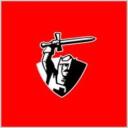Yahoo Answers is shutting down on May 4th, 2021 (Eastern Time) and beginning April 20th, 2021 (Eastern Time) the Yahoo Answers website will be in read-only mode. There will be no changes to other Yahoo properties or services, or your Yahoo account. You can find more information about the Yahoo Answers shutdown and how to download your data on this help page.
Trending News
who was general haig?
i asked this question already but people answered question's about the war only so please can somebody aswer this question ^^
thanks!
sorry for people that answerd my q the wrong way but i mean general 'douglas) haig... thanks..
sorry :)
because i need help on ww1 you see...
i will pick best answer! =D
8 Answers
- QuoiLv 71 decade agoFavorite Answer
Haig was a gerneral of the British forces in France in WW1.
Upon the outbreak of war in August 1914, Haig helped organise the British Expeditionary Force (BEF), commanded by Field Marshal John French. The BEF landed in France on 14 August and advanced into Belgium, where John French intended to meet General Lanrezac's French Fifth Army at Charleroi. During the advance the BEF experienced their first encounter with the Germans at Mons on 23 August.
Following defensive successes at Battle of Mons and Ypres (1st Battle of Ypres), Haig was promoted to full general and in December 1914 the I Corps was expanded into the British First Army of which Haig received command.
In December 1915, Haig replaced French as Commander-in-Chief of the BEF, with French returning to Britain.
From 1 July to 18 November 1916, he directed the British portion of a major Anglo-French offensive, the British offensive at the Somme. The time and place of the battle had been forced upon Haig by the French, who needed to relieve the pressure on the French Army at Verdun. The French insistence on Haig continuing the offensive on the Somme continued throughout the duration of the battle, even after the French went on the offensive at Verdun in October 1916. The forces under his command sustained around 420,000 casualties pushing the German front line back 12km (7 miles) and also inflicting casualties on the German Army it could ill-afford.
On 1 January 1917, Haig was made a field marshal.The second half of 1917 saw Haig conduct another major offensive at Passchendaele (3rd Battle of Ypres); Haig had hoped to break through and liberate the North Sea coast of Belgium from which German U-Boats were operating but, like the Somme Offensive the previous year, Passchendaele saw huge casualties for very little territorial gain, although arguably inflicting losses on the Germans which contributed to their ultimate defeat. By the end of 1917 Lloyd George felt able to begin to assert his authority over the generals. Haig was required to dismiss his Chief of Staff, Lieutenant-General Lancelot Kiggell and his intelligence chief, Brigadier-General Charteris, whose estimates of German losses had been a source of inspiration during Haig's offensives.
During the second German offensive, Georgette in Flanders, Haig issued his famous order that his men must carry on fighting "With Our Backs to the Wall and believing in the Justice of our Cause". Ironically these two German offensives swept over the very ground (the Somme and Passchendaele respectively) which Haig's own offensives had gained at such cost in previous years.
Haig's forces had much success between then and the end of the war, storming the Hindenburg Line in October and advancing into Belgium, almost as far as Brussels. However, the forces under Haig's command achieved impressive results: whereas the French, American and Belgian armies combined captured 196,700 prisoners-of-war and 3,775 German guns between July 18 and the end of the war, Haig's forces, with a smaller army than the French, engaged the main mass of the German Army and captured 188,700 prisoners and 2,840 guns.
Haig was a very influential leader who probably helped win the the war.
Source(s): Condensed version of Wikipedia - Anonymous1 decade ago
Chris's answer is a gr8 summary of Haig's war record - I would only aid that he started the charity that produces all the poppies for the British Legion to sell for Rememberance day
- TampicoLv 71 decade ago
AKA - Alexander Haig
He was Secretary of State under Ronald Reagan.
He "took" control of the government when Reagan was shot.
In 1981, after the March 30 assassination attempt on Reagan, Haig asserted before reporters "I'm in control here" as a result of Reagan's hospitalization.
“ Constitutionally, gentlemen, you have the President, the Vice President and the Secretary of State in that order, and should the President decide he wants to transfer the helm to the Vice President, he will do so. He has not done that. As of now, I am in control here, in the White House, pending return of the Vice President and in close touch with him. If something came up, I would check with him, of course. ”
——Alexander Haig, Alexander Haig, autobiographical profile in TIME Magazine, April 2, 1984[11]
Rather than being seen as an attempt to allay the nation's fear, the quotation became seen as an attempt by Haig to exceed his authority.[citation needed]
Haig was incorrect in his interpretation of the U.S. Constitution concerning both the presidential line of succession and the 25th Amendment, which dictates what happens when a president is incapacitated. The holders of the two offices between the Vice President and the Secretary of State, the Speaker of the House (at the time, Tip O'Neill) and the President pro tempore of the Senate (at the time, J. Strom Thurmond), would be required under U.S. law (3 U.S.C. § 19) to resign their positions in order for either of them to become acting President. This was an unlikely event considering that Vice-President Bush was merely not immediately available. Haig's statement reflected political reality, if not necessarily legal reality. Haig later said,
“ I wasn't talking about transition. I was talking about the executive branch, who is running the government. That was the question asked. It was not, 'Who is in line should the President die?' ”
—— Alexander Haig, Alexander Haig interview with 60 Minutes II April 23, 2001
Source(s): http://en.wikipedia.org/wiki/Alexander_Haig - Anonymous1 decade ago
Alexander Haig was a Philadelphia Main Line "aristocrat" who went to the USMA at West Point on the Hudson and then served a career in staff positions in the US Army. A superb, slick, and guileful politician, he rose to become a General (four star) and Supreme Commander of NATO.
During the height of the Watergate scandal, Haig retired his commission, and joined President Nixon's staff as the President's Chief of Staff, replacing H. Bob Haldemann, who went to prison, along with so many of Nixon's people. It was Haig who engineered Gerry Ford's infamous Nixon pardon which forgave Nixon for "anything he may have done or not done." This pardon was contrary to the Constitution which allows the President to pardon only convicted criminals, not crooked ex-presidents.
After Nixon left office, Haig continued to be involved in the budding Neocon Republican movement, culminating in his being named as Reagan's Secretary of State, when he once again, circumvented the Constitution of the UNited States by telling America the "I'm in charge" after Reagan was accidentally injured by the Secret Service after the assassination attempt by John Hinkley, Jr. He was not only NOT in charge, but he attempted to push two Democrats out of the chain-of-command which resulted, technically, in a failed coup d'etat.
I once referred to Alexander Haig as "the most dangerous man to America," but that was before we met George W. Bush. Both Bush and Haig are real dangers to America's freedom, and Americans' liberties. Beware these people; they hate freedom.
- How do you think about the answers? You can sign in to vote the answer.
- Anonymous7 years ago
Here I got Supreme Commander 2 for free: http://j.mp/1rlLwJz
it's a perfectly working link, no scam !
Supreme Commander offers three single-player modes with a specific and impressive background history that blends into the game play.
- Roger LathburyLv 71 decade ago
Alexander Haig (1924- ), a four star general, was Nixon's Chief of Staff and Reagan's Secretary of State. He famously said that he was in command during a brief hiatus in the Watergate days of nixon's administration. He served in Korea and Viet Nam as well.
- Anonymous1 decade ago
He was the one that led the battle of the somme





